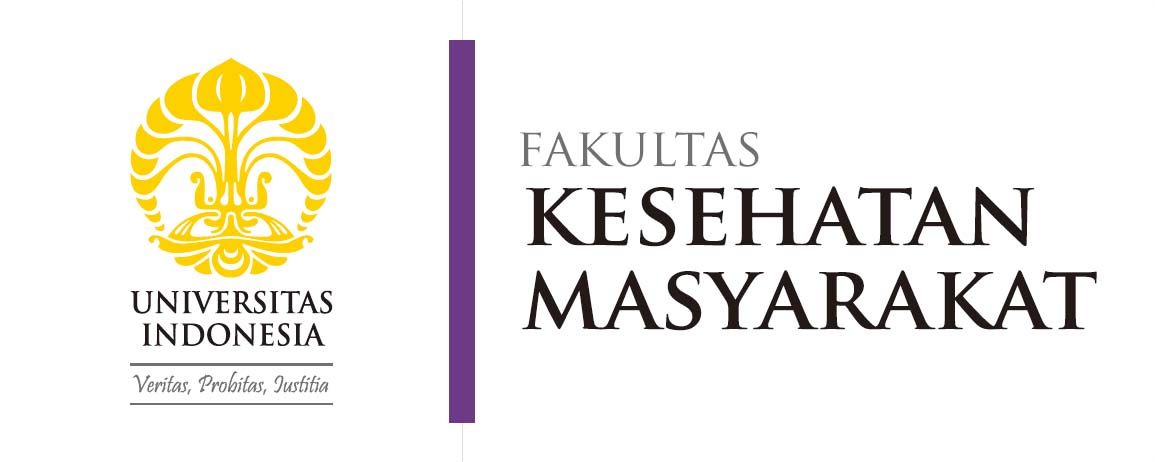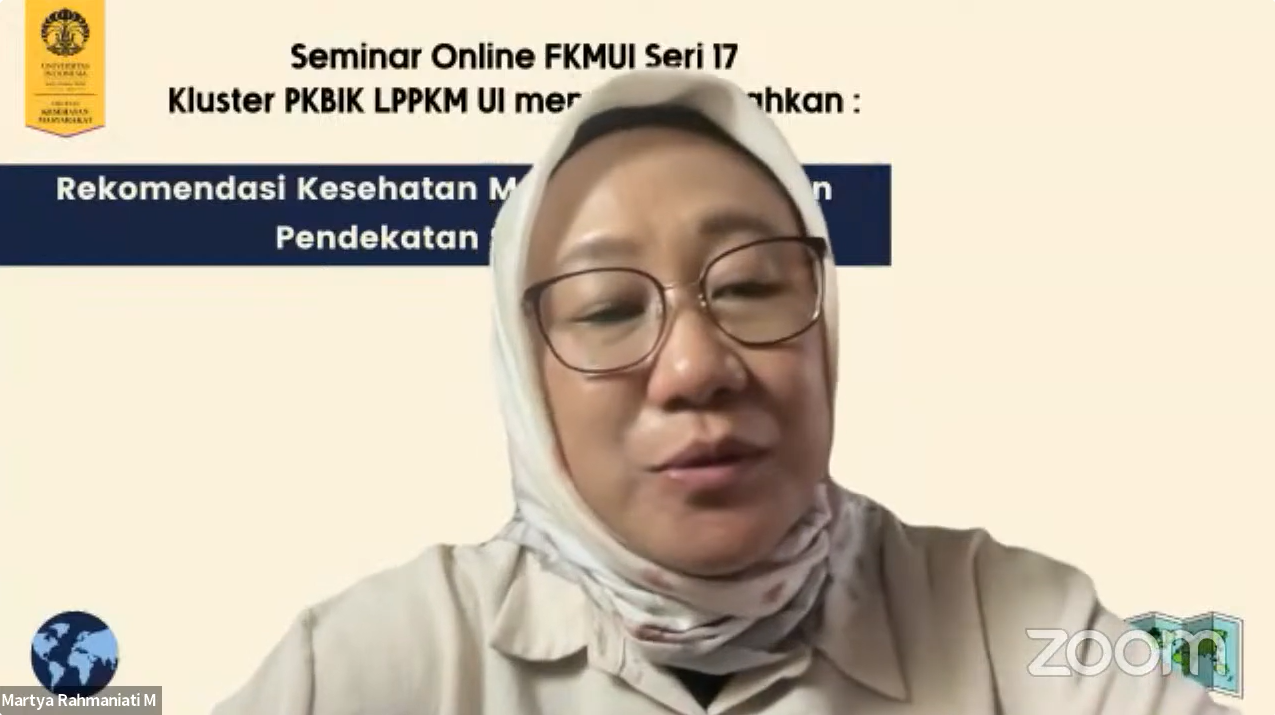The Center for Biostatistics and Health Informatics Studies (CBHIS) under the Research and Community Service Institute (LPPKM) of the Faculty of Public Health (FPH) at the Universitas Indonesia (UI) once again held the 17th FPH UI Online Seminar (SEMOL) with the theme “Public Health Recommendations Using a Spatial Approach.” The seminar took place on Saturday, August 31, 2024, via Zoom Meeting and was broadcast live on the official FPH UI YouTube channel. This seminar, which was open to the public, aimed to provide in-depth insights into how spatial approaches can be used to formulate more precise and effective public health recommendations.
“The theme presented is extraordinary, highly relevant, and important in the health sector, especially in the current era of globalization and rapid technological advancements,” said Dr. Asih Setiarini in her opening remarks. Dr. Asih further emphasized that public health challenges are becoming more complex, and the traditional approaches that have been used are often no longer adequate to analyze and solve problems. Dr. Asih also expressed her belief that spatial approaches could be the solution for analyzing the determinants of various public health issues in Indonesia. She stated that this method is highly beneficial as it allows researchers to explore spatial data and identify effective and efficient patterns, especially using analytical tools such as GEODA. “I hope this seminar will not only provide new insights but also serve as a platform for sharing experiences and knowledge among participants,” she added.
The General Manager of FPH UI, Dr. Martya Rahmaniati, S.Si., M.Si., who is also a lecturer in GIS and Health Informatics at FPH UI, was one of the main speakers at the seminar. Dr. Martya presented material aligned with the theme and highlighted the importance of using spatial methods in public health. “Spatial methods are used to obtain observational information that is influenced by spatial or locational effects,” Dr. Martya explained. She added that the health sector has been utilizing spatial approaches for various purposes since the 19th century.
Furthermore, Dr. Martya emphasized that spatial technology has many applications in health, such as health strategy planning, research, evaluation, and emergency preparedness in healthcare services. “In epidemiological research, spatial approaches are very beneficial for prediction, surveillance, management, and analysis of infectious diseases,” she stated. She also mentioned that this approach enables researchers to utilize remote sensing technology and monitor the spread of diseases, both infectious and non-communicable, worldwide.
Another speaker at the seminar, Mochamad Anwarid Ardans Pratama, S.K.M., M.K.M., CIAP., presented a topic on “Geographically Weighted Regression (GWR) Model of the Determinants of Neonatal Mortality Rate in Central Java, East Java, West Java, and Yogyakarta Special Region in 2022.” In his presentation, he revealed alarming global data: in 2021, 2.4 million babies died in their first month of life, with 47% of those deaths occurring during the neonatal period. Anwarid also pointed out that in Indonesia, in 2022, there were 21,447 child deaths aged 0-59 months, with 85%, or about 18,281 deaths, occurring in babies aged 0-28 days. “The neonatal mortality rate can reflect the quality of maternal and child health services, such as Antenatal Care (ANC), delivery by competent health workers, and postnatal services. The higher the neonatal mortality rate in an area, the lower the quality of maternal and child health services there,” Anwarid explained.
Anwarid also discussed Geographically Weighted Regression (GWR), an advanced form of linear regression that incorporates local weights for each area. “GWR allows us to identify model parameters that are locally significant for each region,” he added. From the GWR modeling results, it was found that among the six variables analyzed, three variables significantly affected the Neonatal Mortality Rate (NMR), namely Low Birth Weight (LBW), road density, and complete neonatal visits.
Saidah Fatimah Sari Simanjuntak, S.K.M., M.K.M., then presented on “The Distribution of Rabies Animal Bites (GHPR) Cases in Relation to Human, Animal, and Environmental Factors in North Tapanuli Regency, North Sumatra Province, 2022-2023.” In her presentation, Saidah reminded that rabies is often neglected, even though it is caused by the Lyssavirus, and 98% of transmission occurs through dog bites. “Globally, the highest number of rabies-related deaths occurs in Asia, reaching 59.6%,” Saidah explained. She also revealed that in Indonesia, the number of Rabies Animal Bite (GHPR) cases significantly increased from 57,257 cases in 2021 to 104,229 cases in 2022, a rise of 82.04%. In North Sumatra, North Tapanuli Regency became one of the areas with the highest rabies outbreak cases. “Since 2017, rabies has been classified as an outbreak in North Tapanuli three times, in 2017, 2018, and 2023. In 2023, there were 868 dog bite cases resulting in one death,” she said.
The pattern of GHPR cases in North Tapanuli Regency in 2022 and 2023 showed clustering in several sub-districts. “There is a spatial autocorrelation between GHPR cases and human, animal, and environmental factors in North Tapanuli Regency during this period,” Saidah stated. She recommended that the North Tapanuli Regency Government strengthen the GHPR case monitoring system using spatial data and GIS technology. “Utilizing GIS can help map and monitor the spread of GHPR cases in real-time, as well as ensure the availability of veterinary health facilities in each sub-district,” she added.
This 17th Online Seminar not only served as a platform for sharing knowledge and experiences but also motivated academics, researchers, and health practitioners to continue innovating and collaborating in improving the quality of healthcare services in the future. (DFD)

